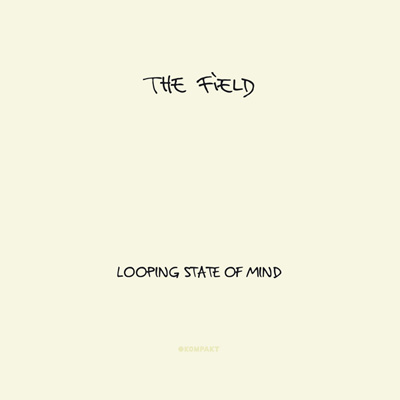As a minimal techno crossover, The Field’s Axel Wilner doesn’t seem satisfied with the portion of the field (sorry) he’s staked as his own. From Here We Go Sublime, The Field’s 2007 debut was perhaps one of the quietest watershed records to ever drop out of Kompakt – a record label that seems content to be whatever masthead of German techno everyone wants it to be. But The Field seemed discontent to let the aesthetic on From Here We Go Sublime – walls of looping chopped up samples that fell on the eclectic side of a 4/4 pulse (Kate Bush, Lionel Richie) – sit for even a minute.
There was controversy in letting that minimal sample-upon-sample-and-nothing-else pomp become a basis for something else rather than the something itself. With Looping State of Mind in hand, 2009’s Yesterday & Today feels a little like a transitional record. The shoegaze-like onslaught of sound created by From Here We Go Sublime‘s expanding sample aesthetic was still in place, but it was being interrupted by actual dynamics – minor loops and bass grooves that were content to edge into things almost halfway through a ten minute track. It was more accessible and more dance-oriented, for sure, but in a way that seemed noncommittal and unsure if that’s what it wanted to be. It also had the minimal tech-bound habit of ‘minimal means add a layer three minutes at a time,’ which From Here We Go seemed to dodge from the outset.
Looping State of Mind is still built from the same unquestionably The Field production basis, but here he has never sounded more confident and purposeful, building layered and incredibly rich compositions out of his blissful loops that more than justify the length they inhabit. Wilner has become an exceedingly thorough artist, blending swaths of trancey melodies with intricate and organic drum patterns and wringing every possible compositional direction available to him. For a minimal techno artist, The Field becomes a sort of maximalist on Looping State of Mind by transcending his aesthetic and creating anthemic landscapes where he once rode along the pure physicality of his samples.
On the title track, which builds around a throbbing sonorous bass loop and a tropical dance pattern, the immediate surroundings at the onset of the song become considerably less Earth-bound as colossal droning silvery synthesizers swallow the proceedings into more singular and cosmic realm. Perhaps the standout oddity, “Then It’s White” is the most unrecognizably The Field thing on here. A lazily mournful piano becomes an organic mantra as star-filled synthesizers rise and ebb and an echoing pitched-down vocal cascades across the landscape. It’s the most impressionistic and overtly beautiful thing here and its subtle 4/4 throb is barely noticeable beneath the wavering heartbreak.
Looping State of Mind fully commits to its dance-readiness where Yesterday & Today might have still been a little shy. The Field has always bathed his samples in a layer of swampy reverb, but their chopped aesthetic oftentimes shone through, creating an oddly antiseptic edge to some of From Here We Go‘s early proceedings. By the third record though, it seems Wilner is willing to let the samples latch onto hard grooves, embedding the edges further into the mix. On opener “Is This Power” the skipping sample is left pretty bare, but it already dives into some unconscious swagger. It doesn’t wait long to let the patient bass line accompaniment follow suit with the shuffling drums and the om-ing basso synthesizer that lays beneath the track like a hellish droning pit. All the divergent and textural elements manage become the focus of the song, leaving the sample groove far behind. “It’s Up There” manages to ride out of a wall of furling synths and dance grooves until the razor sharp bass line turns it into an all-is-one cosmic disco retreat.
Both these songs manage to build and build until they finally give out to an understated bridge, which then explodes again toward another direction. These types of movements have never been apart of The Field’s calling card, and they give these songs some dramatic imagination and drive. Oddly enough, The Field has gone from a cerebral-throbbing loner to the closest thing minimal has to an arena act. The Field’s progression might be a little more subtle than the differences between the barely-changing cover art seen across all three records, but it’s still astonishing to note how much The Field sounds like The Field while managing to contrast his beginnings a couple times over.


